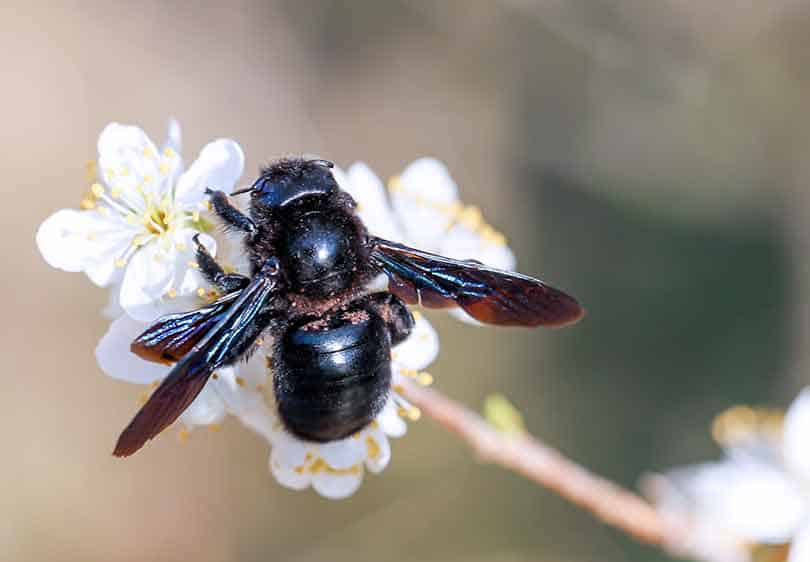Comprehensive Bug Control Provider to Fight Vole Infestations
Vole invasions can quickly rise, triggering damages to yards, yards, and landscapes. The effect of these little rodents can be swift and significant, necessitating a detailed pest control method to effectively take care of the situation. Recognizing the habits and biology of voles is essential in developing an incorporated strategy that not only deals with the present infestation yet likewise avoids future incidents. By employing a mix of identification, trapping, environment, and exclusion modification strategies, expert parasite control solutions can provide a customized remedy to deal with vole infestations. The essential lies in executing an all-around strategy that not just removes existing voles yet likewise develops lasting control actions to safeguard versus future intrusions.
Vole Recognition and Inspection
Voles, small rats looking like mice yet with much shorter tails, are commonly found in gardens and backyards, making precise recognition vital for reliable bug control procedures. These pests can cause substantial damages to plant life and crops, making timely activity important in minimizing potential losses. When inspecting for voles, try to find their particular paths, burrow openings, and nibbled plant roots. vole control utah. Vole paths are typically found externally of the ground and are created as they commute in between their burrows and food resources. Burrow openings are little, concerning 1-2 inches in size, and bring about below ground passages where voles nest and look for shelter. Gnawed plant roots are an additional indicator of vole activity, indicating their visibility and prospective damages to greenery. By precisely determining these signs, parasite control professionals can tailor their techniques to successfully manage vole problems and safeguard gardens and yards from further damage.

Trapping and Elimination Strategies
Effective pest control methods for managing vole invasions commonly include using specialized trapping and removal methods. Trapping is a commonly utilized technique to catch voles and transfer them away from properties. Live catches, such as box catches or tube traps, are generally utilized as they permit the safe capture of voles without causing damage. These catches are strategically put in vole paths or near burrow entrances to increase the chances of successful capture.
When establishing traps, it is vital to ensure they are placed appropriately and baited with vole-preferred food sources like peanut butter, seeds, or fruits. Frequently checking the traps is essential to without delay get rid of captured voles and avoid distress or harm to the animals. As soon as caught, voles must be relocated to ideal habitats much from human residences to stay clear of re-infestation.
Furthermore, exemption techniques, such as mounting obstacles or fence underground, can help deter voles from accessing details areas. Appropriate disposal of captured voles and regular monitoring of vole task are crucial components of an effective trapping and removal strategy in vole invasion dig this monitoring.
Exclusion and Barrier Techniques

By addressing these susceptabilities and applying targeted exclusion and barrier actions, home owners can significantly decrease the danger of vole problems. Eventually, a combination of trapping, elimination, and proactive exemption measures can help successfully handle vole populations and secure buildings from problems.
Environment Modification and Avoidance
To reduce vole invasions, environment modification and prevention techniques focus on altering the setting to prevent vole habitation. One reliable method is reducing the accessibility of food sources by maintaining yard cut short, removing weeds and particles, and preserving a clean backyard. Voles are brought in to locations with thick greenery and mess, so creating open rooms can assist prevent them from clearing up in the area. In addition, reducing excess dampness by taking care of leaking pipelines, guaranteeing correct drain, and eliminating standing water can make the environment much less welcoming for voles.
Including obstacles like crushed rock borders or cable mesh underground can also protect against voles from tunneling right into yards or gardens. By carrying out these habitat alterations and prevention procedures, property owners can proactively minimize the threat of vole problems and shield their exterior areas from damage.
Monitoring and Follow-Up Approaches

Follow-up approaches involve taking another look at the treated locations to look image source for any type of indications of vole task. Checking terminals, traps, and aesthetic assessments are frequently used techniques to review the success of the insect control measures. By frequently examining these locations, insect control specialists can quickly recognize any kind of resurgence of vole task and take proactive actions to resolve the issue before it intensifies.
Additionally, documenting the results of monitoring and follow-up tasks is important for tracking the progress of vole invasion control in time. These records assist in recognizing trends, reviewing the effectiveness of various control techniques, and making notified decisions for future parasite monitoring techniques. Normal follow-up procedures not only help in preventing vole re-infestations however also add to the total success of bug control initiatives.
Verdict
In final thought, detailed pest control solutions are necessary for efficiently combating vole problems. By checking and determining vole populations, executing capturing and elimination methods, making use of exemption and obstacle approaches, modifying environments, and applying tracking and follow-up approaches, residential or commercial property owners can efficiently manage and stop future infestations. It is crucial to attend to vole infestations promptly to avoid damage to property and possible health and wellness risks.
By utilizing a mix of recognition, trapping, environment, and exemption adjustment techniques, professional bug control services can supply a tailored remedy to fight vole problems (vole control utah). By properly identifying these indications, parasite control specialists can customize their methods to successfully take care of vole invasions and safeguard gardens and lawns from further injury
Effective parasite control strategies for taking care of vole problems usually involve employing specialized capturing and elimination methods.To reduce vole infestations, habitat adjustment and prevention strategies focus on changing the environment to inhibit vole habitation.Routine monitoring and follow-up treatments are necessary in preserving vole invasion control measures and guaranteeing long-term success in parasite monitoring.